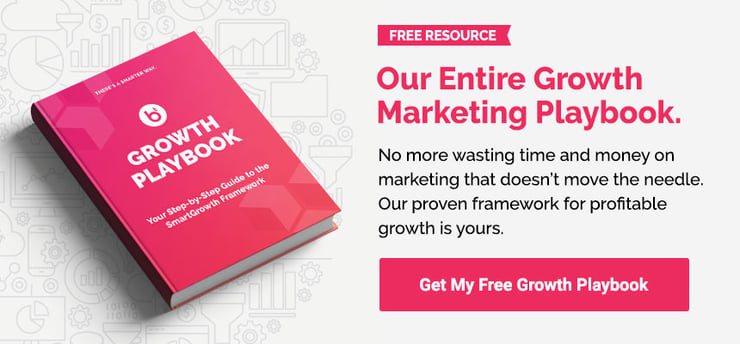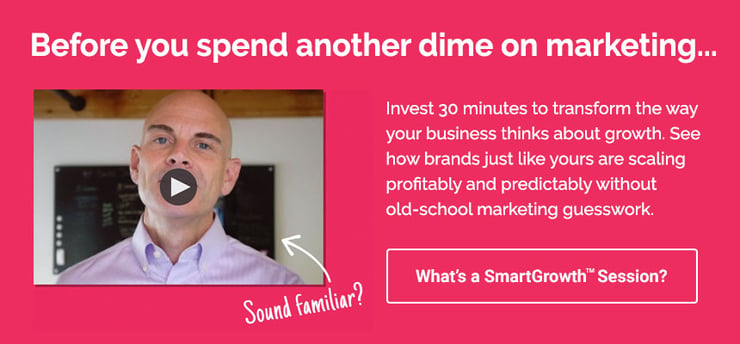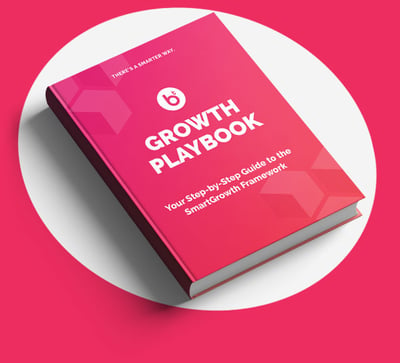A marketing strategy for growth, whether you are a startup or have been growing your company for years, aims to create a scalable system for getting new customers and building your brand. What is a growth marketing strategy, and is it the right plan for your company to acquire customers?
This article will simplify the concepts of growth marketing so you can grow your company like a professional growth marketer. You’ll learn how growth marketing terms like "customer acquisition" and "lead generation" fit into a growth system, and how to create a winning strategy like growth marketing agencies do with their services.
What are the Goals of Growth Marketing?
A growth marketing strategy, at its core, is a data-driven plan for profitable, repeatable, scalable customer acquisition. One of the primary goals is to achieve an exponential return on marketing spend.
Many businesses have little more than wasted time and money to show for their marketing efforts. Growth marketing is the remedy.
So, what is a growth system? And how do you grow your company with a growth system that works?
Every company needs customers. But to grow, they need a repeatable system for acquiring them profitably. We call this a “growth system.”
Think of it as a customer pipeline or a customer acquisition system that uses data to continuously analyze and improve results. In other words, to scale revenue repeatedly.
What’s a customer acquisition system?
A customer acquisition system is a process designed to move buyers through four key marketing and sales milestones:
- Awareness – Attracting visitors to your website.
- Acquisition – Converting anonymous visitors to known leads.
- Activation – Converting leads into qualified sales prospects.
- Revenue – Generating a new customer with a successful sale.
Specifics may vary based on your industry, but every growth marketing strategy “acquires” customers by first generating some type of interest or demand from a target audience.
After generating demand, the goal is to generate leads – individuals who have expressed an interest and have provided contact information.
Next, a lead may be further qualified and nurtured until they are close to a buying decision. A successful sales process will result in an “acquired” customer (a purchase).
Growth strategy doesn’t stop with the sale. Every new customer represents an opportunity for repeat business and referrals, making continued outreach a key priority for growth.
Customer acquisition? Growth marketing systems? Demand generation?
Marketing terms can seem overly complex, but they often represent simple concepts. Now that you know some of them, you’re ready to start learning the growth marketing strategies that will help your company win.
How Growth Marketing Leads to Customer Acquisition: Growth Channels
What are growth channels? Sounds like more marketing lingo, but your company doesn’t need a consultant to explain this one either.
Think about how people find your brand online.
A “growth channel” is any online source your company can use to engage and attract potential customers.
Examples of growth channels are:
- Search engines (often through blogging)
- Word-of-mouth (client referrals, positive reviews)
- Emails
- Paid advertising
- Social media
After identifying channels of growth and attracting your target audience, you’ll want to analyze data to see which growth channels are generating the most leads.
Haven’t been monitoring marketing data and aren’t sure how? Not to fear. The best growth consultants can help you strategize and build a customer acquisition system from scratch – one that monitors existing growth channels and creates new ones.
When your growth channels begin generating leads, you’ll want to separate them into two groups:
- Marketing Qualified Lead (MQL) – Some interest, but not ready to buy.
- Sales Qualified Lead (SQL) – Close to making a purchasing decision.
When leads are categorized as MQLs and SQLs, your sales team will know who to prioritize, and who still needs to be nurtured with continued marketing outreach.
You may even decide to prioritize with lead scoring – assigning a numerical value to the likelihood that they will become a customer. If you're unsure how to score leads after they have been generated, a consultant can incorporate this into your growth system as well.
Using Your Company Website for Growth Marketing
Growth marketing is the fuel for your growth system. And your company website is the engine.
A successful customer acquisition strategy will engage buyers on digital channels like search engines and social media, and attract them to your website. Then, it’s all about leading them through the journey – from lead, to sales prospect, to customer. Every communication lives on, or leads back to, your website – where every activity can be monitored, measured, tested and improved.
Tracking Quarterly Growth
Quantifiable charts, graphs, and other data management systems are needed to track quarter-over-quarter growth to measure demand generation, lead generation, customer acquisition, and overall sales revenue.
Identifying the right key performance indicators (KPI) is essential to measuring your return on investment (ROI), but now you know the basics of a growth marketing system. We'll dive into growth metrics in a future post. Until then, get out there and start growing – the smart way.
You've got this.






.png)
.png)
.png)
